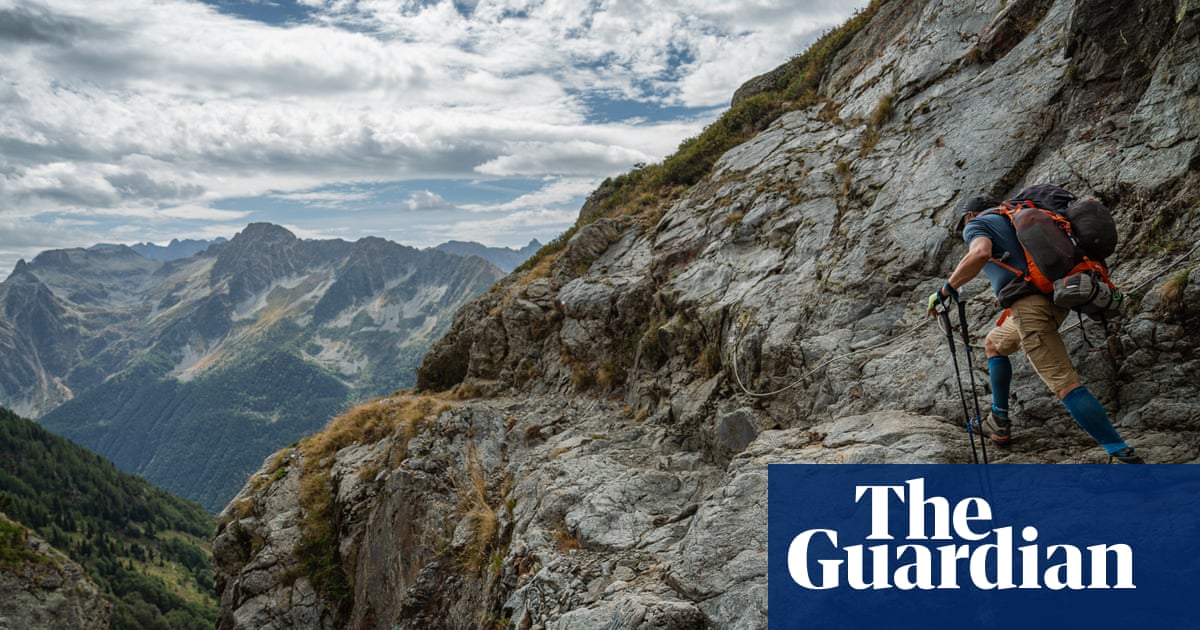I first learned about the Écrins national park in relation to a specific nature reserve within it. The réserve intégrale du Lauvitel was established in 1995 to “monitor the natural dynamics of ecosystems” with all human influence removed. This so-called wilderness area was one of the first of its kind in Europe.
A video showed an ecologist rowing across a dazzling, teal-hued lake surrounded by pine-strewn peaks. I was immediately fascinated. Admittedly, a forbidden zone taps into plenty of childhood adventure fantasies, but it’s also a bold statutory move a world apart from our more modest environmental experiments in the UK. Yet fortress conservation begs difficult questions: are humans a part of nature, or apart from it?
There was no way to set foot in the forbidden zone, but there was a way to get close. The Grand Tour des Écrins (GR54) is one of Europe’s finest long-distance trails, running through one of France’s largest national parks, which celebrated its 50th anniversary in 2023. Second only to Grand Randonnée 20 on Corsica in terms of difficulty, the GR54 is far less popular and busy.
More than 112 miles (180km) long and taking around 12 days, it circumnavigates the Hautes-Alpes, weaving through meadows and ancient mixed woodland, across wind-strafed cols andd beneath sunstruck seracs. On the way, there are more than 12,000 metres of cliffs, moraines, screes and schists to be walked, scrambled and stumbled up.
The Tour des Écrins is a real adventure – far from easy, yet still manageable for mere mortals. We begin east of Le Bourg-d’Oisans, south-east of Grenoble. On day one, we climb 1,000 metres up wooded switchbacks to a series of medieval hamlets hanging from the cliffs, each with its own water fountain, pausing to eat windblown plums and to smile at our new reality. Our first afternoon sees a hot march through ski infrastructure, but that’s the first and last of it. While the Écrins is not a backwater, neither has it succumbed to the commercialism of the central Alps.
Orchards and allotments are ripe and full. Cattle graze in open pasture on the margins of the villages. We’d expected a high alpine walk, so the ubiquity and variety of woodland between cols and settlements is a surprise. Huge stands of aspen shimmer on the hillsides, and alder, sycamore, beech, pine and birch line the rivers. Forest cover in France is at least…
Click Here to Read the Full Original Article at Travel | The Guardian…
